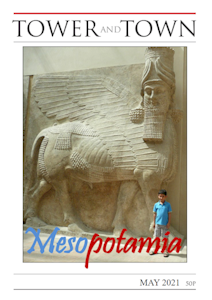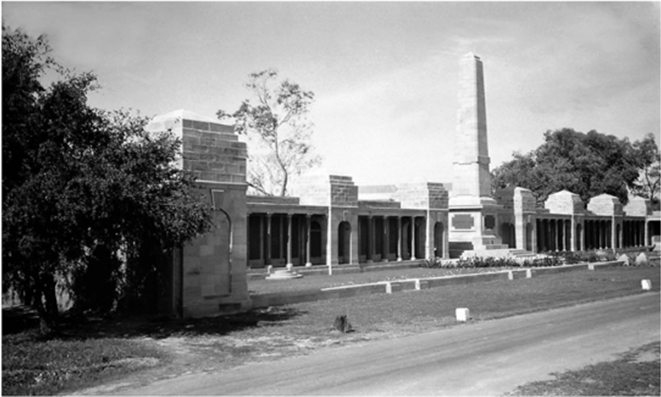

Tower and Town, May 2021 (view the full edition) (view the full edition)The Concealed British Mausoleum In MesopotamiaThe Commonwealth War Graves Commission (CWGC) cares for the 1.7 million men and women of the Commonwealth forces who died in the First and Second World Wars, ensuring they will never be forgotten. Funded by six member governments, its work began with building, and now maintaining, cemeteries and memorials at 23,000 locations all over the world.  In 1914, Mesopotamia was part of the Ottoman Empire. Mesopotamia was strategically important because of British oil interests in neighbouring Persia. A force was sent from India to Mesopotamia in late 1914, to secure the oil refineries at Abadan. It was designated Indian Expeditionary Force D (IEF D). Throughout the campaign, India would provide the majority of manpower and supplies. Capturing Basra was the first objective of the campaign and an early success of the whole campaign in the Middle eastern theatre of WWI (1914-1918), which was fought between the Allies, represented by the British Empire troops mainly from India, against the Central Powers, mostly from the Ottoman Empire. The small force that arrived in 1914 was reinforced considerably by the end of March 1915 and secured the oil fields. British Indian forces continued to advance further north, spurred by this early success. In November 1915, the advance was finally halted at the Battle of Ctesiphon, resulting in heavy losses. Between January and April 1916, British and Indian troops fought up the River Tigris in an attempt to relieve the garrison at Kut. However, they failed to break through the Ottoman defences and ultimately lost more men than the number under siege at Kut. British and Indian forces suffered casualties of more than 85,000 killed, wounded and captured in Mesopotamia. It was a campaign fought largely by the Indian Army, often in challenging conditions with limited supplies and medical care. After the war, the Ottoman Empire was dismantled and its territories partitioned. Mesopotamia became modern day Iraq. In 19 locations throughout Iraq, the CWGC commemorates more than 54,000 Commonwealth deaths in Iraq during the two world wars. Only in France, the United Kingdom, Belgium and India does the CWGC have a larger commitment. The British architect and archaeologist, Edward Warren (1856-1937) was appointed 'Principal Architect for Mesopotamia' in 1919, a difficult position in such a remote and inhospitable region. He designed the 'Memorial to the Missing' in Basra and the 'Tomb of General Maude' in Baghdad. The memorial of Basra recalls the more than 40,500 Commonwealth troops who were killed in operations in Mesopotamia from the Autumn of 1914 until the end of August 1921 and whose graves were unknown. The memorial was unveiled by Sir Gilbert Clayton on March 27th 1929. The Basra Memorial was built on the shores of the Shat Al-Arab waterway just south of the Basra Margil Port and close to the main offices of the British forces command headquarters. During the years, the memorial was the place for many ceremonies and events and was guarded and maintained by Iraqis employed by the CWCG via the British embassy. Due to military conflicts with Iran, the then President of Iraq Saddam Hussein in 1997 established a special task force to dismantle the original memorial and transfer it to a safe location. The new location was identified to mark the Battle of Shaibah (12-14 April 1915), one of the fiercest battles between British-Indian and Ottoman armies about 10 miles west of current Basra. Shaibah is also the desert location where, in 1920, the British Royal Air Force established its 'RAF Station Shaibah' in a small airfield. When the British army occupied Basra in 2003, they renewed the desert-based memorial and built a protective wall around the site. After an enforced absence of more than 12 years, staff from the CWGC have made a historic return to Iraq. However, due to the current instability, alternative arrangements for commemoration have been implemented whereby a two-volume Roll of Honour is presently on display at the CWGC's Head Office in Maidenhead. Ghanim Alsheikh, MD, PhD (Lond), FFPH-RCP. Professor Alsheikh is a specialist in Neurosciences, Public Health and Medical Education. He was the founding dean of two medical schools in Iraq and Yemen (1988-2000) and served as WHO regional coordinator for the countries of the Eastern Mediterranean Region. Educated in Iraq and the UK, he currently holds an honorary post at Imperial College London WHO Collaborating Centre and lives in Brighton. Ghanim Alsheikh |